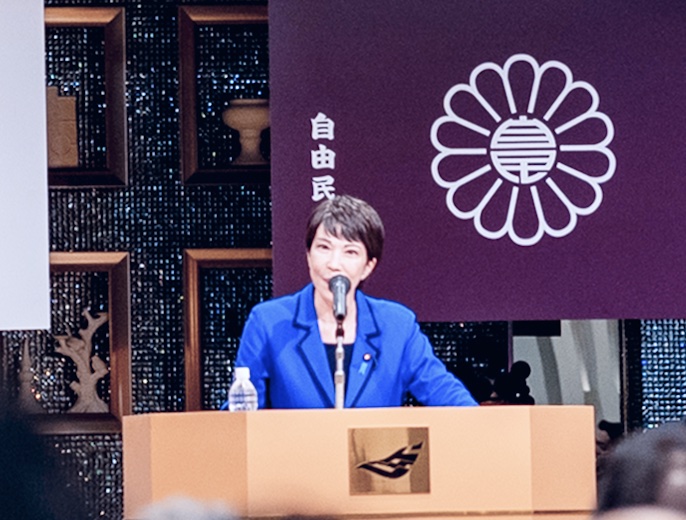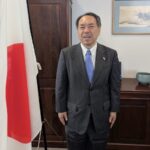The incoming Japanese Prime Minister, Sanae Takaichi, has passed the leadership test, not of becoming the first female to come through a male-dominated society and polity to lead Japan, but in her ability to put together a coalition of sorts so that the Liberal Democratic Party can continue to stay in power.
With a 26-year-old coalition with Komeito falling apart and the LDP needing at least 233 seats to retain its majority, Takaichi took on the difficult task of finding a party or 37 members of Parliament who could keep her afloat. That came by way of the Japan Innovation Party (known as Ishin), whose leader was quite blunt.
“Politics should be about taking risks when necessary to open up new paths,” Osaka Governor and leader of Ishin, Hirofumi Yoshimura, said, adding in the same breath that it was a “very difficult decision,” as most parties that had a coalition with the LDP “disappeared.”
In one sense, it can be argued that there were not many cards left to play for Takaichi once Komeito left the political alliance of nearly three decades. Parties on the far left or far right could not be expected to give up their basic principles; the same applies to those in the middle, left, or right. For a party that was not too long ago dubbed the “second LDP,” Ishin could be seen as a natural fit: broad agreements with the LDP on the need to rewrite the constitution and a robust defense buildup with an eye on China. What could bring the Innovation Party closer to Takaichi is its stance on immigration—tighter control, a cap on foreign residents, and limits on property purchases by foreign investors.
The major point of contention, analysts maintain, would be over the scale of government spending, as the incoming leader looks at higher levels to get the economy going as well as to help those hurt by inflation. But for a party that has advocated for smaller government and tax cuts, Ishin has apparently settled for tradeoffs: a cut in parliamentary seats and a two-year pause on consumption tax on food.
The perception is that Takaichi will have to come to terms with social security reforms, free high school education, and whether women can retain their surnames after marriage. Still, there are larger issues that will have to be ironed out, such as the role of big money in politics—donations and corporate doles.
Even in normal times, it does not take much for media pundits to start speculating on the tenure of a Prime Minister. From a steady succession process in the LDP through its factions, in the last several years Japanese politics has come to be known for its “revolving door” Prime Ministers. And now, the guessing game begins on how long this 104th Prime Minister will last, with history showing that Prime Minister Naruhiko Higashikuni of Japan’s Imperial Family had the shortest service in 1945 for 54 days, and Shinzo Abe registered a record of 8-plus years in 2006–07 and 2012–20.
Just how strong or weak Prime Minister Takaichi will be depends not only on how she handles domestic policy imperatives and finds middle ground with ultra-conservatives but also on foreign policy—dealing with China, the two Koreas, Taiwan, Russia, and the United States.
In the next few weeks will come her first challenges—the summit of the Association of Southeast Asian Nations (ASEAN) that she could attend in Malaysia, and the Leaders Summit of the Asia-Pacific Economic Cooperation Forum (APEC) in South Korea, scheduled for the last week of October and the beginning of November. Between these two meetings, Prime Minister Takaichi will have sessions with leaders of the Asia-Pacific, including China, India, and the United States. It is rumored that President Donald Trump is also planning a trip to Japan when he is in Asia during this time.
The United States and China will stand out as especially difficult to deal with, for different reasons, given the sensitivities. Beijing sees Tokyo as one of the central actors in Washington’s game of containment, and Japan sees China as one of the major forces of destabilization in the Indo-Pacific, particularly regarding freedom of navigation. Add to this the big question mark over how Premier Takaichi will deal with Taiwan.
Waving the ultra-conservative flag, especially on issues of immigration, is unlikely to win any special concessions from President Trump; neither will the fact that the new Japanese leader is a protégé of Shinzo Abe, said to be his great “friend.” What is bound to irritate President Trump is any attempt to reopen questions on a tariffs deal that Prime Minister Shigeru Ishiba had signed off on or to persist with questions on the framework of Japanese investments to the tune of some US$550 billion, especially the part dealing with benefits to Washington and Tokyo.
For that matter, President Trump is not quite happy that Japan spends close to 2 percent of its GDP on defense, having breached the 1 percent ceiling some time ago; Tokyo is still seen as one of the “freeloaders.”
Takaichi knows full well that the current glamour surrounding her shattering the glass ceiling of becoming the first woman Prime Minister is unlikely to last long; or, for that matter, that being dubbed the “Margaret Thatcher of Japan” will make governing any easier in the weeks and months to come.
Disclaimer: The opinions and views expressed in this article/column are those of the author(s) and do not necessarily reflect the views or positions of South Asian Herald.






